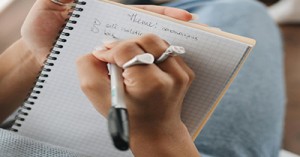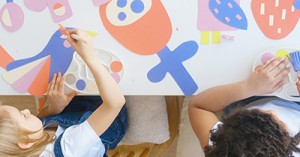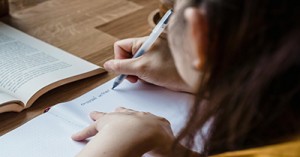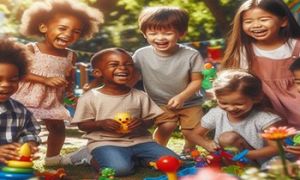A: A summary of learning in early childhood education provides a comprehensive overview of a child's progress, helping educators, parents, and caregivers understand their development. Here are some key benefits:
Benefits Of Summary Of Learning
1. Tracks Development Over Time
- Summarizing learning helps educators see patterns in a child's growth, identifying strengths and areas for improvement.
2. Supports Individualized Learning
- By analyzing a child's learning journey, educators can tailor activities to match their unique needs and interests.
3. Enhances Communication with Families
- Parents gain insight into their child's learning experiences, fostering collaboration between home and school.
4. Encourages Reflection & Self-Awareness
- Children can review their own work, helping them develop self-assessment skills and confidence.
5. Strengthens Curriculum Planning
- Educators use summaries to refine teaching strategies and ensure children meet developmental milestones.
How To Write A Summary Of Learning
Writing a summary of learning involves capturing key insights, progress, and reflections in a concise and meaningful way. Here’s a simple guide to help you craft an effective summary:
1. Identify Key Learning Points
- Highlight the most important concepts, skills, or knowledge gained.
- Focus on areas of growth and improvement.
2. Use Clear & Concise Language
- Keep sentences short and to the point.
- Avoid unnecessary details—stick to the essentials.
3. Organize Information Logically
- Structure your summary in a way that flows naturally (chronologically or by themes).
- Use bullet points or paragraphs for clarity.
4. Include Reflections & Insights
- Mention how the learning experience has impacted understanding or skills.
- If applicable, discuss challenges faced and how they were overcome.
5. End with Future Goals
- Outline next steps or areas for continued learning.
- Set goals for applying the knowledge in practical situations.
Example Of Summary Of Learning
Child’s Name: Emily
Age: 4 years
Date: June 8, 2025
Summary of Learning
Over the past term, Emily has demonstrated significant growth in her language and communication skills. She confidently engages in conversations with peers and educators, using a wide range of vocabulary. Her storytelling abilities have improved, as seen in her ability to sequence events and express emotions through drawings and narratives.
Emily has also shown progress in fine motor skills, particularly in her ability to hold a pencil correctly and form letters. She enjoys creative activities such as painting and collage-making, which have strengthened her hand-eye coordination.
In social and emotional development, Emily has become more independent in problem-solving and conflict resolution. She actively participates in group activities, demonstrating cooperation and empathy toward her peers.
Moving forward, we will continue to support Emily’s literacy development by introducing more structured writing activities and encouraging her to explore new storytelling techniques.
Further Reading
Summative Assessments In Early Childhood
Guide To Writing Summative Assessments
EYLF Learning Outcomes Version 2.0
Writing Prompts and Phrases For Reports On Children
Summary Of Learning Template







 Here is the list of the EYLF Learning Outcomes that you can use as a guide or reference for your documentation and planning. The EYLF
Here is the list of the EYLF Learning Outcomes that you can use as a guide or reference for your documentation and planning. The EYLF The EYLF is a guide which consists of Principles, Practices and 5 main Learning Outcomes along with each of their sub outcomes, based on identity,
The EYLF is a guide which consists of Principles, Practices and 5 main Learning Outcomes along with each of their sub outcomes, based on identity, This is a guide on How to Write a Learning Story. It provides information on What Is A Learning Story, Writing A Learning Story, Sample
This is a guide on How to Write a Learning Story. It provides information on What Is A Learning Story, Writing A Learning Story, Sample One of the most important types of documentation methods that educators needs to be familiar with are “observations”. Observations are crucial for all early childhood
One of the most important types of documentation methods that educators needs to be familiar with are “observations”. Observations are crucial for all early childhood To support children achieve learning outcomes from the EYLF Framework, the following list gives educators examples of how to promote children's learning in each individual
To support children achieve learning outcomes from the EYLF Framework, the following list gives educators examples of how to promote children's learning in each individual Reflective practice is learning from everyday situations and issues and concerns that arise which form part of our daily routine while working in an early
Reflective practice is learning from everyday situations and issues and concerns that arise which form part of our daily routine while working in an early Within Australia, Programming and Planning is reflected and supported by the Early Years Learning Framework. Educators within early childhood settings, use the EYLF to guide
Within Australia, Programming and Planning is reflected and supported by the Early Years Learning Framework. Educators within early childhood settings, use the EYLF to guide When observing children, it's important that we use a range of different observation methods from running records, learning stories to photographs and work samples. Using
When observing children, it's important that we use a range of different observation methods from running records, learning stories to photographs and work samples. Using This is a guide for educators on what to observe under each sub learning outcome from the EYLF Framework, when a child is engaged in
This is a guide for educators on what to observe under each sub learning outcome from the EYLF Framework, when a child is engaged in The Early Years Learning Framework describes the curriculum as “all the interactions, experiences, activities, routines and events, planned and unplanned, that occur in an environment
The Early Years Learning Framework describes the curriculum as “all the interactions, experiences, activities, routines and events, planned and unplanned, that occur in an environment


